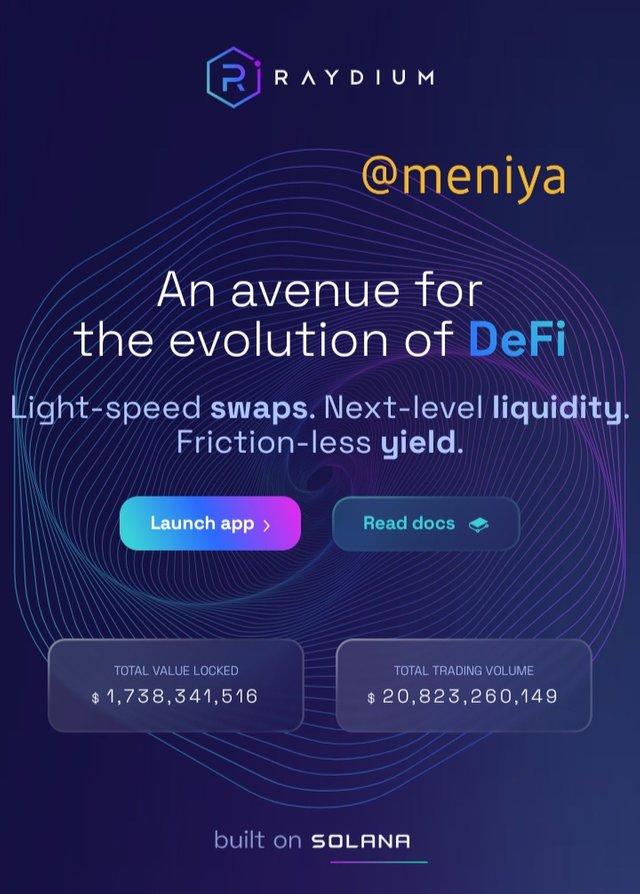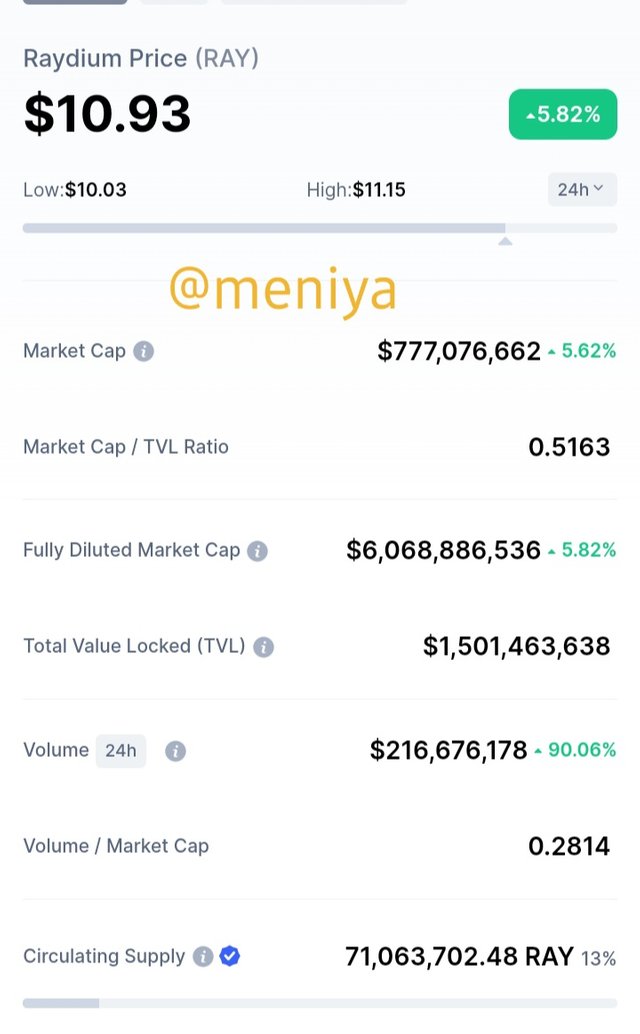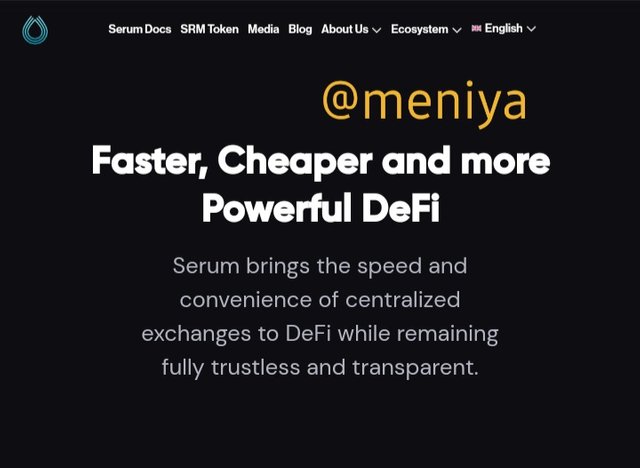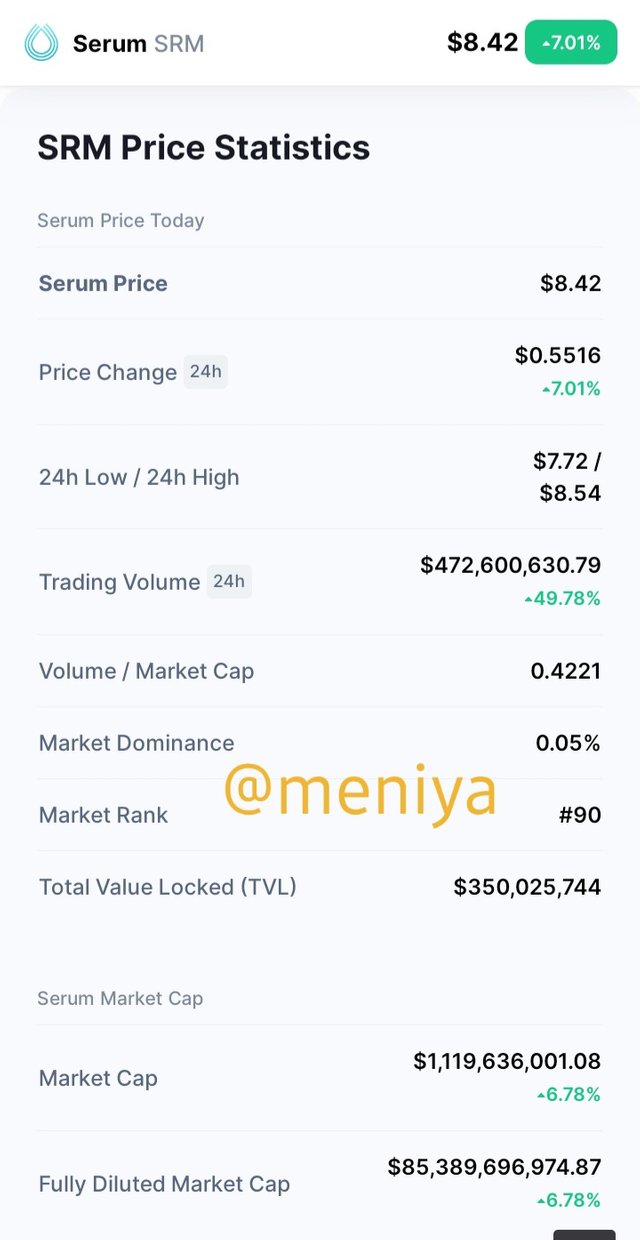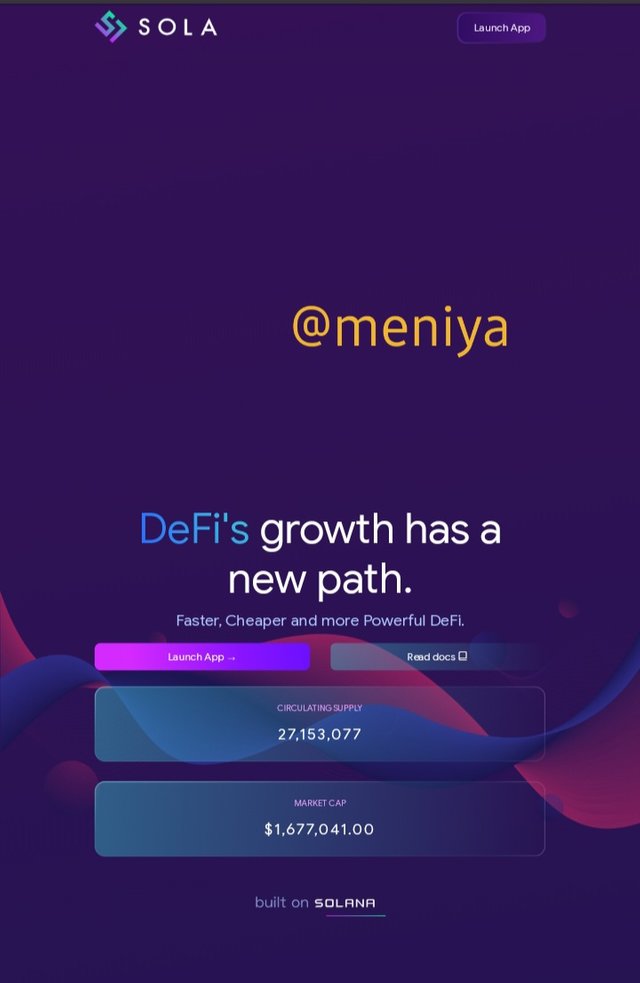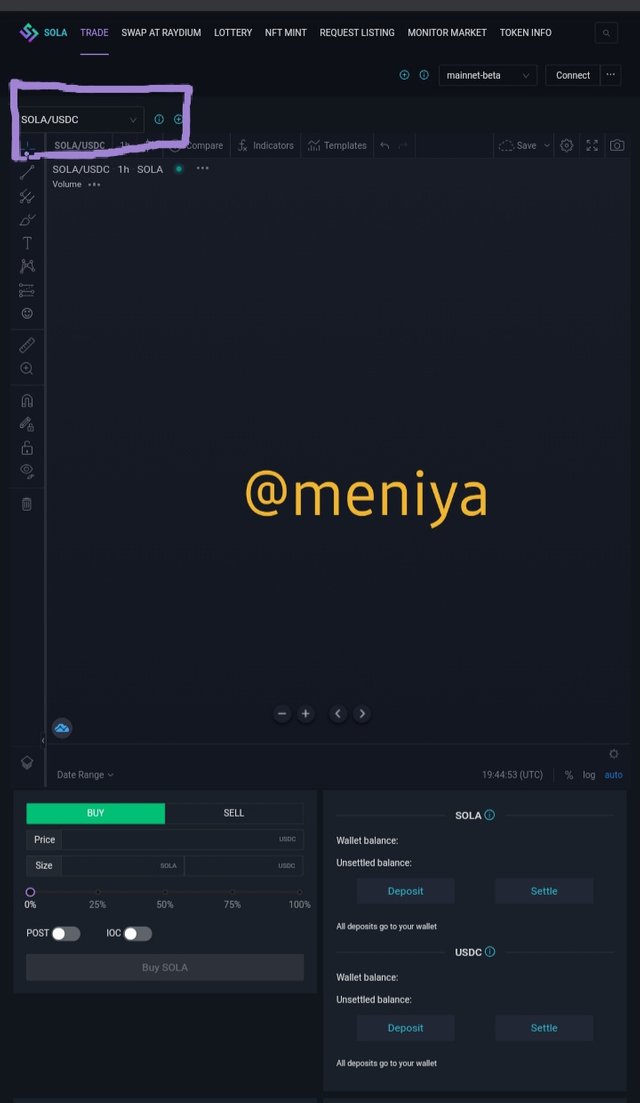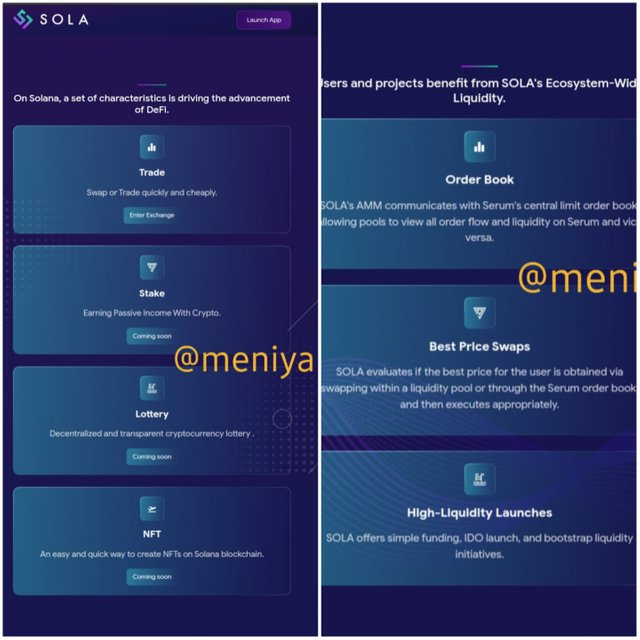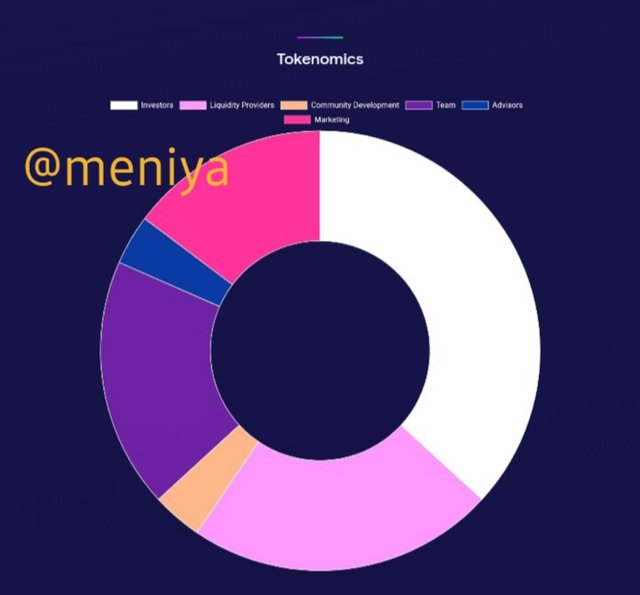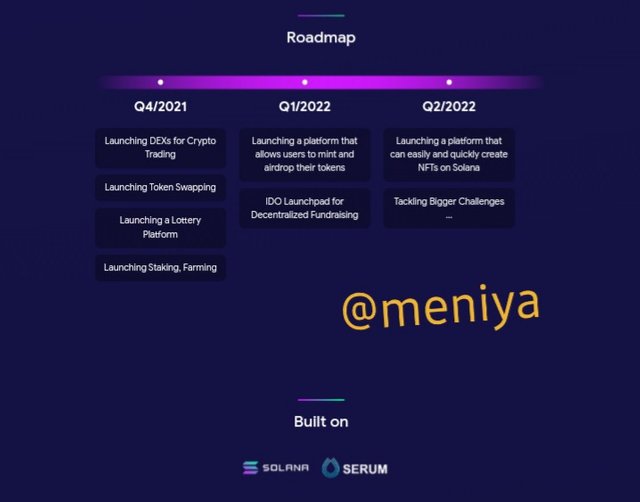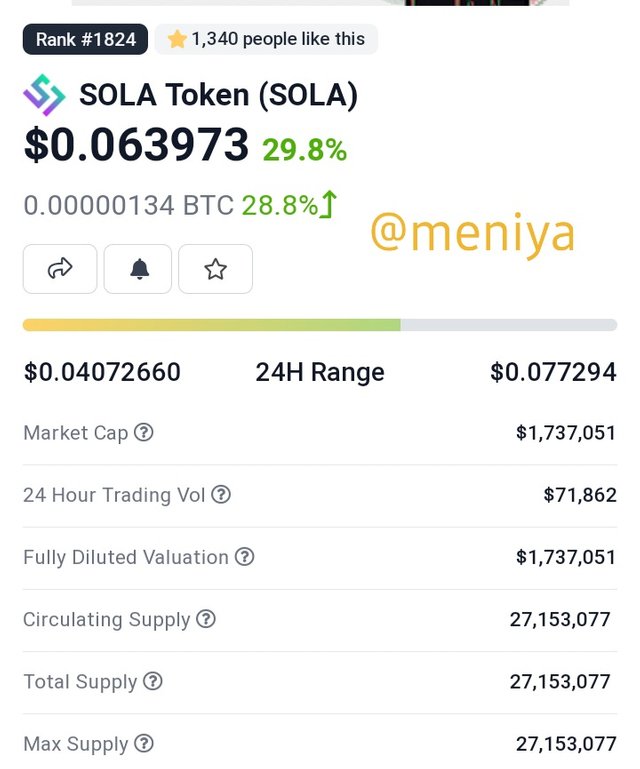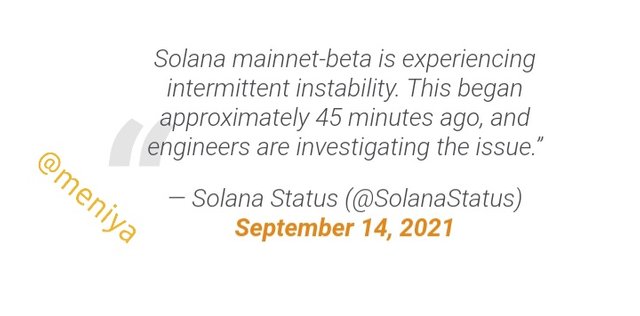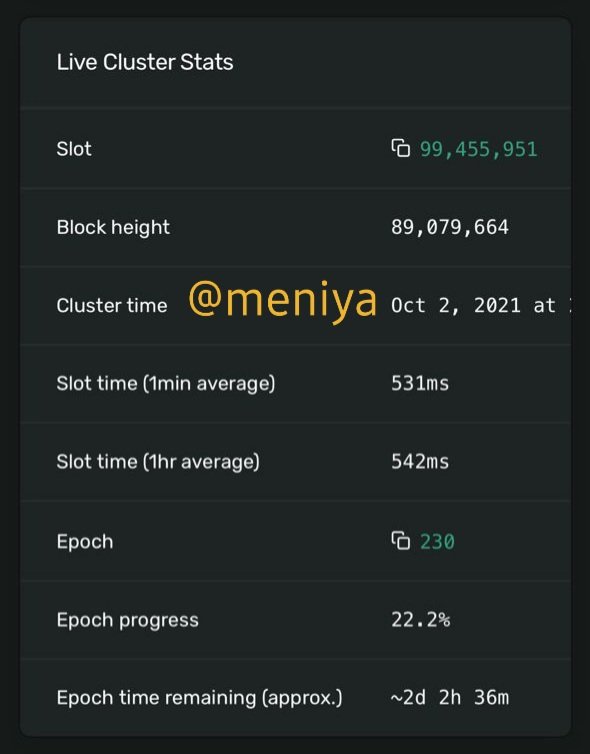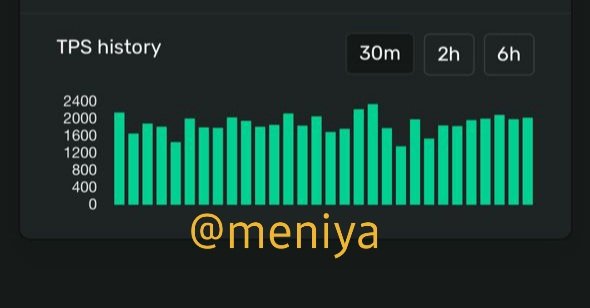Solana Blockchain - Crypto Academy / S4W4 - Homework post for pelon53
Hello crypto academians, nice to be part of another wonderful lecture by professor @pelon53 on Solana Blockchain. Below is my homework task. Thank you
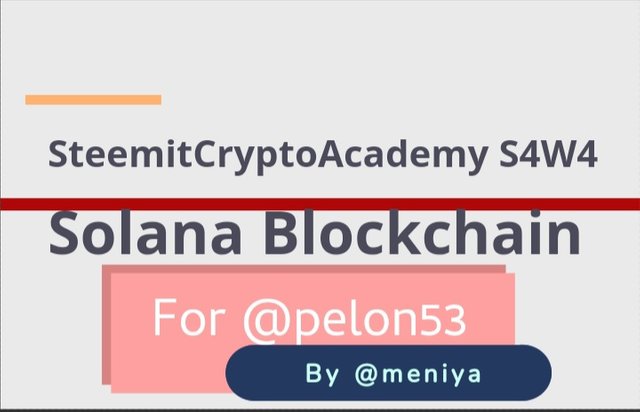
INTRODUCTION
Solana blockchain is a third generation open-source platform designed to specifically support decentralized applications (DeFi)blockchain network. Solana network is currently operated and managed by the Geneva-based Solana Foundation and Solana Labs. Its white paper was published in 2017 by the founder (Anatoly Yakovenko) and was run on testnet till March 2020, when it's mainnet was launched.
Solana network harnasses the Proof of stake and Proof of History alograthm, which improves the scalability and security of their blockchain, as compared to other blockchain networks like Ethereum and Bitcoin. Upon the development of Solana Blockchain, the network system employed the integration of 8 core innovations (Turbine, Sea level, Golf Stream, Cloud Break, Archeivers, Proof of History consensus algorithm,Tower BFT and Pipline) to enhance user's scalability and provide composability, thus making Solana blockchain a single layered blockchain. Unlike with the Bitcoin and Ethereum blockchain network which were suffering from several throughput problems since 2017, all thanks to Solana developers who came up with Solana network idea to overcome this problem of Layer 2 protocols or sharding .
Solana Blockchain is better known as a programmable blockchain equipped with smart contracts for running the decentralized apps making it one of the fastest known programmable blockchain in crypto space today. Transactions with Solana blockchain are ultimately fast and highly secured. carried out in a fast and secure way. The Solana blockchain supports lots of project, some of which are Solana NFTs, DApps, DEX etc.
Proof Of History
The "Proof of History" is a new consensus protocol used by Solana blockchain. The PoH is one of the main innovations of Solana, it is a Verifiable Delay Function(VDF), in which hash functions are orderly recorded to potray the time of each transactions. The PoH consensus is maainly focused on resolving the problem of “time agreement.” PoH uses encoded cryptographic generated time in the Solana network, without the use of normal time of the system. As seen with other blockchain like Ethereum and Bitcoin, where the timestamp is not recorded on the network, since there is no historical record of previous events that had occurred. Again this is where PoH resolves this issues with the use of VDFs to hash all transactionsand events carried out on Solana networks to record their messages sequentically without the need of a timestamp, thus solving the issue of time and increasing the rate of transaction process. Making Solana blockchain more scalable compared to the other blockchains. The Verifiable Delay Function are lighter and hence, can be solved with only a core CPU with similar steps, making PoH much flexible and easy as compared to POW, where validators are required to solve complex mathematical problems.
However, PoH works in parapasuit with Tower BFT (a modified version of PBFT). The implementation of PoH and Tower BFT in Solana network helps to further improve the networks security, scalability and decentralized nature. With PoH, Solana network is able to carryout over 50000 transactions per second with 200 distributed nodes and a low transaction fee of $0.00001.
PoH helps to improve the Solana's scalability by reducing the work load of the network nodes to enhance faster transactions. The validation of the hashes generated by the PoH protocol is then verified by witnesses in the network by voting, this achieved by the implementation of Tower BFT protocol la custom implementation of Practical Byzantine Fault Tolerance). The Tower BFT, works by making the validators of the network vote on a particular PoH record and makes the validators guarantee that they will not be voting for another contradicting record for N hashes which is known as timeout. and the timeout doubles for every vote casted by a validator
TWO CASES USING SOLANA BLOCKCHAIN
1. RAY-TOKEN (Raydium)
Raydium (RAY-TOKEN) is one of the best DeFi projects of Solana, it is an automated market maker and a known liquidity provider for Serum Decentralized Exchange(DEX). Raydium was founded by AlphaRay, XRay and GammaRay in the Solana network, and its mainnet was launched on 21st of February, 2021 with 555,000,000 tokens created at the beginning. Out of which 34% of the tokens will be released as liquidity mining incentives within a 3years timeframe, 30% of tokens are programmed for partnerships and the expansion of Raydium exchange system.
Raydium provides on-chain liquidity in the market, which is to say to, all funds put into Raydium exchange are converted into limit orders which is placed on Serum’s orderbooks. Giving the liquid providers of Raydium access to all of Serum’s order flow as well as their present liquidity. This is one of the core objectives of Raydium, to be the
number 1 liquidity provider among Serum liquidity providers and the automated market makers. Raydium exchange acts as a link to upcoming projects that wants to be a part of Solana network and Serum, and also permits partnership in developing a platform. The RAY Token is used for, Staking to earn protocol fees and to receive IDO allocations and nodes in possession of Ray tokens are given governance votes to vote and make decisions on the network.
The Raydium Swap is the most used feature of Raydium exchange, it enables users exchange their cryptocurrencies with a pair of their choice with a low commission fee. The Raydium Swap also give access to the flow of orders and liquidity of Serum and vice versa, and gives a user what the best price is within a liquidity group and also has AcceleRaytor which helps in improving Solana's growth, where projects can raise funds and boost the liquidity of decentralized apps, thereby creating an opportunity for users to participate in the offers. Transactions with Raydium is well supported by Solana blockchain, making transactions super fast with a low transaction fee. Raydium token is tradeable and some of the top exchanges for trading Raydium includes; FTX, ZT, BINANCE and Gate.io.
As at the time of writing, RAY Token is ranked #109 with a price value of $10.93, a 24-hour trade volume of $$216,676,178, market cap of $777,076,662, and a circulating supply of 71,063,702.48 RAY.
2. Serum
Serum is a high-performing decentralized exchange built on the Solana ecosystem with a full on-chain central limit order book, a matching engine that provides liquidity for its users and a price time matching to it's traders. Serum supported by Solana network provides high transaction speed with low transaction costs to DeFis.
The Serum project an open source project founded by a group of consortium partners; the Solana Foundation, FTX, and Alameda Research. Serum development is supported by Serum foundation and backed by a group of crypto trading experts and Defi's. As an open source project Seum gives it's user's permission to create their own DeXs and Defi games on the platform with specific instructions from the platform. The main aim of Serum is to achieve complete 100% decentralization in crypto ecosystem, although it doesn't support KYC service.
The native token of Serum is known as Serum token(SRM). From the screenshot above, Serum token is ranked #90. It's price value is $8.42, with a market cap of $1,119,636,001.08 and fully diluted market cap of $85,389,696,974.87, 24hr trading volume of $472,600,630.79 and circulating supply of 133,231,781 SRM.
The Sola Token
SOLA Token
The Sola token is a Defi platform with both centralized (CEX) and decentralized exchanges (DEX) functions, built on the Solana blockchain which provides fast transactions speed and low transaction fees to its users. The Sola token uses Automated market maker alograthm, which distributes liquidity through an automated trading pattern to its users, to know how to develop asset management in order to reduce loss. The Sola token uses an order book form one of its partners Serum. Serum and Solana blockchain are the official partners of Sola token.
Although, Sola token exchange is not yet in full operation, but they have an outlined number of crypto assets on their network which will traded with USDC and USDT, and can also be traded on the platform.
Sola token exchange has great prospects for its users when it becomes fully integrated into cryoto space, as users will be able to trade their tokens, stake and swap tokens, mint NFTs, and even have lottery on the platform. When you scroll down the interface of Sola token exchange, you see the various functions and roadmap of Sola Token.
Sola Roadmap
According to solatoken.net, the circulating supply of Sola token is 27,153,077 and is currently distributed by airdrops and other liquidity providers platform for investors and traders.
THE SOLANA BLOCKCHAIN INTERRUPTION
On the 14th of September, 2021, Solana
Blockchain network experienced an unannounced network interruption. At about 12:38pm Tuesday 14th September 2021, Solana network team made an announcement through Solana Status Twitter account informing the public about the instability in the network over 45mins.
From statement released via Twitter, the Incidence was said to have occured due to overload of work on the network, as the transactions load on the network rose to 400000 per second as compared to its maximum 60000 transactions per second, this lead to a denial of service(DoS) interruption and made the network to carry out forking on it's own.
The forking proposed made validating nodes to go offline for almost 20hours, because the nodes validating the transactions were quite limited and had much transactions than the normal capacity they could handle, thus a rebooting and no single block was produced within the next 8hours. Due to the fact that Solana engineers were not able to rectify the network instability immediately, the validating community proposed a reboot of the network and a hard fork was proposed with the proof of stake consensus algorithm. An agreement was reached and was endorsed by about 80% of active stakeholders in the blockchain. The SOL token is the native token of Solana Blockchain.
The September 14th Incidence is the second time in 12days that the network experienced intermittent instability. This Incidence occzred at the time SOL token was gaining momentum in crypto space, the news led to a downtrend in SOL token price falling by 15% within the 12hours of intermittent instability. With the recent setback experience in the network the confidence of it's users has also been reduced.
EXPLORE SOLANA EXPLORER
First, I visited Solana Explorer to get a detailed of Solana network.
The last block in Solana network at the time of performing this task is #99455951
I further checked for the details of block 1, but no information was available. From the lecture by professor, Solana mainnet was launched in March 2020, which is almost about 18months ago. we can also say, that the mainet has been in operation for 1.8 years. So calculating
the time interval of each block since the initial block, we have;
•Time of operation = 18 months
•Time in Seconds we have = 18 x 2,630,000 = 47340000 Seconds
Therefore, Average Time per Block = 47340000/99455951 = 0.4759896168(approximately 0.5 Seconds)
From the calculation above, it shows that, a new block is generated every approximately 0.5 seconds. We can therefore say, approximately 2 blocks are generated every second since the network operations started.
CONCLUSION
Solana Blockchain is a great innovation to crypto space. It is a decentralized open-source platform that supports many DApps, with a high transaction speed capacity, well secured, permission-less and highly scalable, as it operates with proof of stake and proof of history. It's native token is known as SOL token, which looks like a good coin to invest in.
The Sola token exchange is a great platform with great prospects for its users when fully operational. Thanks professor for an interesting lecture as usual.
Cc: @pelon53
